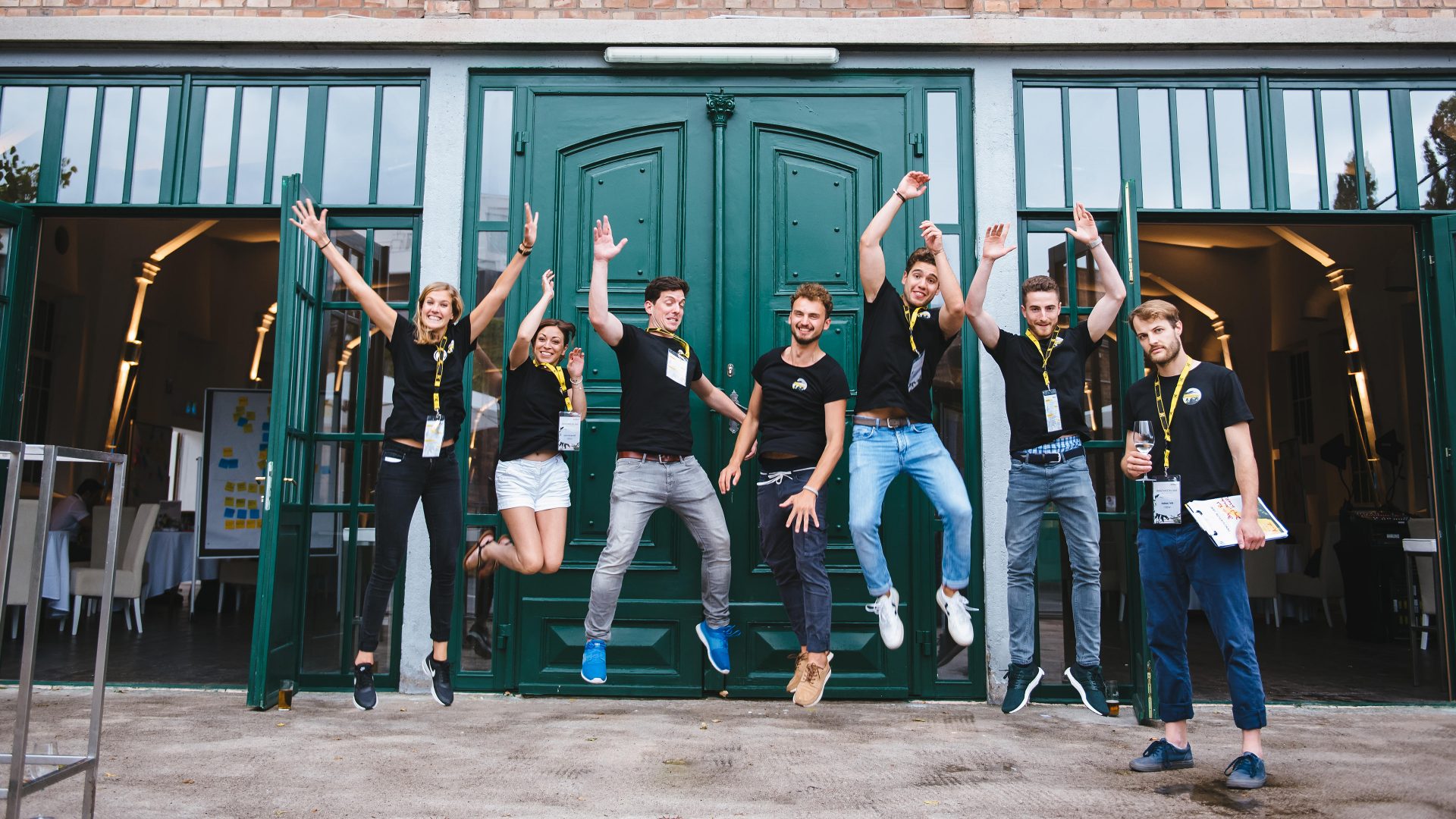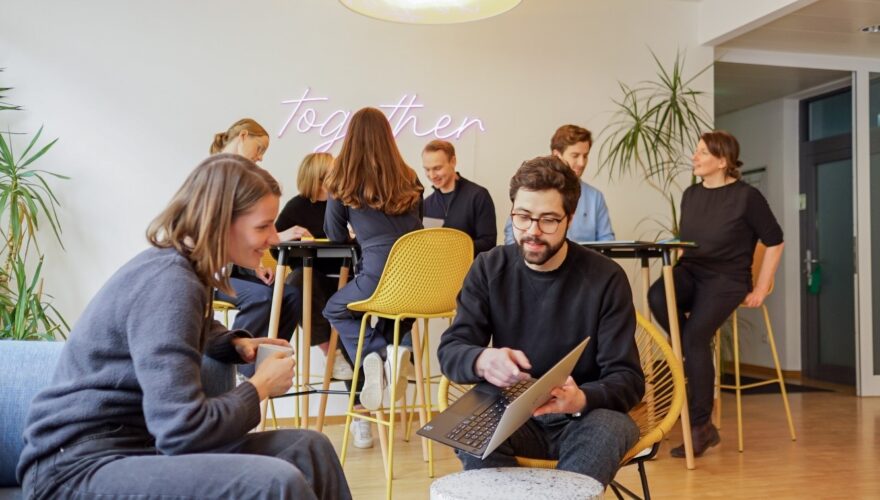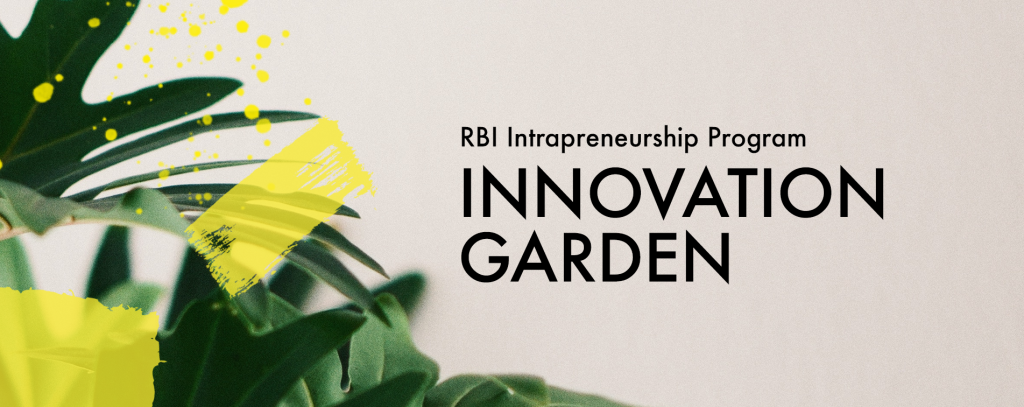
At the heart of the Innovation Garden is the 12-week HYVE Innovation Lab approach, which for many years has been successfully creating innovation with the company’s own employees.
During the intrapreneurship project last year, three RBI teams, accompanied by RBI Innovation Managers and HYVE, successfully developed three digital prototypes including a concept (pitch deck) and presented them to a board jury as a basis for decision-making.
In spring 2018, the program was designed and implemented under the new name “Innovation Garden” – now much larger and more far-reaching. As part of an internal idea contest open to all banks within RBI’s network, more than 765 ideas were submitted and discussed in six defined challenges for internal process improvements and new market/customer solutions. All of that within just a few weeks. Almost 270 – out of 3,600 active – participants applied to participate in the Innovation Garden. Not even half of them (100) entered the 20 most promising ideas for the coveted Innovation Jam. During the jam, the eight best ideas and 40 most suitable “intrapreneurs” were selected for two Intrapreneurship Batches of 12 weeks each in autumn 2018.
HYVE sat down with Silvia Handler from RBI and Michael Maier from HYVE Vienna to talk about the process, effects and challenges of the Innovation Garden:
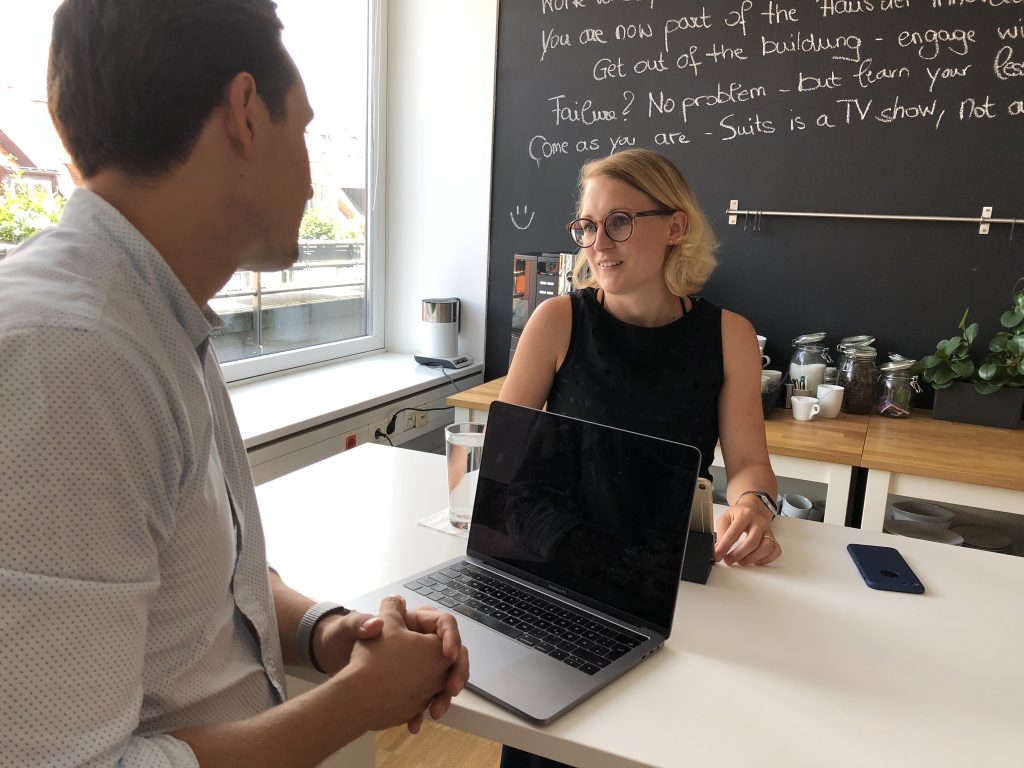
Silvia, can you please briefly tell us about the approach you chose with the Innovation Garden? How did it work? What is so special about it?
For the first time, the program allowed us to involve all employees in the idea-finding process and to identify ideas from the entire group. Another very positive side effect of the idea contest was the networking among colleagues. During the contest, 60 mentors continuously evaluated the submitted ideas and encouraged discussions about their iterative improvement and sharpening. After the contest, the most exciting ideas were selected (in so-called shortlisting workshops) for further development during the Innovation Jam. RBI colleagues from HR and Innovation Management reviewed the applications and allocated them to cross-functional five-member teams.
In the two-day Innovation Jam, 100 people went through the six Design Thinking phases in a quick walkthrough in order to develop 20 ideas as efficiently as possible. These well-developed ideas were finally presented to the Innovation Board (RBI’s executive board), which selected the best eight ideas for the Intrapreneurship Batches.
The team of innovation and HR experts from RBI and HYVE supporting the Jam not only accompanied the methodical process and the teams on site, but also had an observational task to staff the most suitable participants after the Jam.
Why did RBI choose this approach?
Our goal is to identify and develop intrapreneurs from the entire RBI Group and to work with them on current challenges. With nearly 50,000 employees in the group, it was important to me to find a way to involve everyone. The HYVE platform is an excellent tool for this. Especially within our network, the opportunity to work on topics at group level was extremely well received and triggered a real competition on the platform.
The Innovation Jam offers the advantage of developing ideas in a very short time and selecting them for the 12-week program as well as being able to observe and then select suitable participants in the “lab-like” working mode. In addition, such an innovation jam – with its size and presence – always has a strong educational, but also communicative component. Both are essential components in innovation management.
In the intrapreneurship batches, 40 participants focused on the chance to work on the topics with the customer and to test out the most critical hypotheses.
Michael, how did you experience the customer’s innovation culture before working with HYVE? Did you perceive any changes throughout the collaboration?
We have been very positive about the culture right from the start and are delighted to be working with such a professional team that not only provides with a suitable setting and full board commitment. Moreover, they also know how to make the best use of this and how to generate enormous impact and a strong movement with a lot of energy, heart and soul.
I think every step and every action in this program creates change. For me personally, the development of the teams was incredibly exciting. Within just a few weeks, they had accepted the new agile working methodology so well that, as alumni, they can now set a strong example.
What is the composition of the HYVE team?
We carry out the project locally and – depending on the project phase – we can count on different best suited coaches and experts from Munich. At the Jam, HYVE was represented by a large team of experts such as Johann Füller, Michael Bartl and Giordano Koch as external jury members.
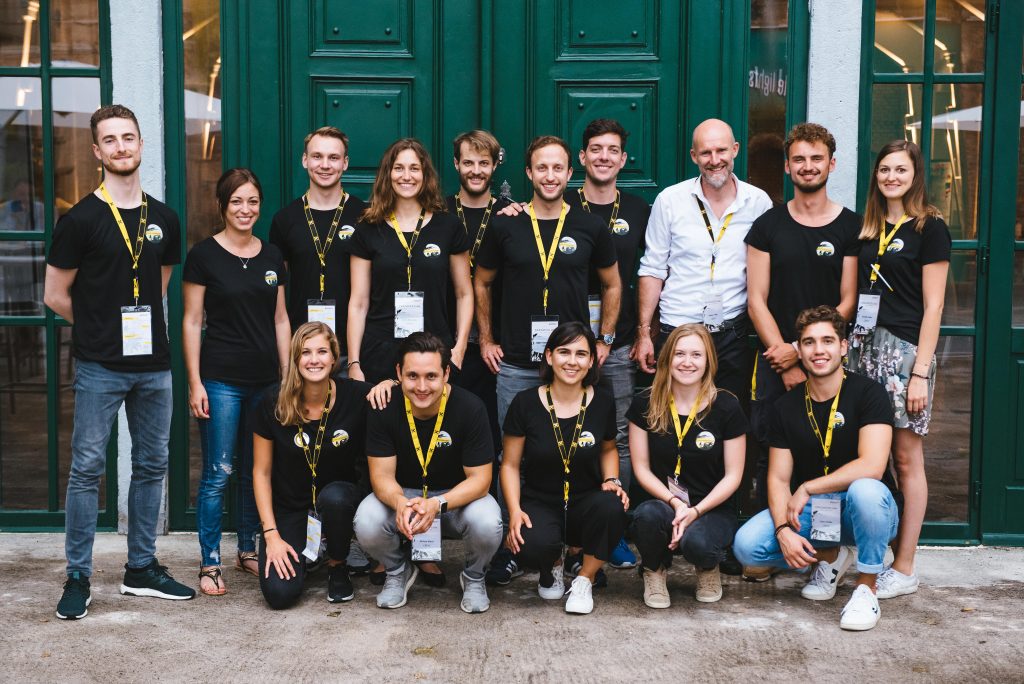
And are there already any learnings from the previous process? What are the client’s biggest challenges?
The big challenge is to select the most relevant and suitable ideas from a multitude of exciting contributions – all of which come from their own company – for a 12-week program. Also, like any other bank, RBI faces the challenges of today: a volatile and dynamic time (VUCA world) with drivers such as digitization, rapidly changing customer requirements, large digital players, fast startups and the resulting new demands on innovation processes.
Having said this, what are the latest trends or technological changes affecting RBI?
Everything to do with digitization, digital banking products, data and AI, crypto currencies, chatbots and service/support of the future, but also regulatory changes and requirements.
Silvia, did you observe anything particularly exciting during the program?
The enthusiasm of the participants, who were 100% dedicated to the topics and showed their full commitment. This creates an incredibly positive and energetic atmosphere. I can hardly wait for the two batches to start at the end of August. I also sense a new culture of how we – as RBI – approach these topics.
Michael, is this joy contagious?
Definitely! Personally, I am most pleased when team members thank me for what they have learned and enthusiastically accept and spread new methods or ways of thinking. And if the customer is happy at the end – with the course of events, the mood, but also the result which is there at the end!
About the interviewees:
Michael Maier studied Urban Technologies (energy and environmental technology) and Executive Management. After 3.5 years in international environmental-technology equipment-construction (STRABAG), he accompanied the development of the renowned Austrian crowd investing start-up CONDA in its first year.
Since September, Michael has been with HYVE and was responsible for the establishment of the Vienna office and the Austrian market.
Silvia Handler studied business consulting with a focus on market communication and sales. Her professional career has taken her through various positions at Raiffeisen. She started in the sales support department of Raiffeisen Bausparkasse, later she helped to build up the market and innovation management department at RZB (Raiffeisen Zentralbank). In the course of the merger of RBI and RZB she played a major role in setting up innovation management for RBI. She is now responsible for the group-wide Innovation Garden intrapreneurship program.
